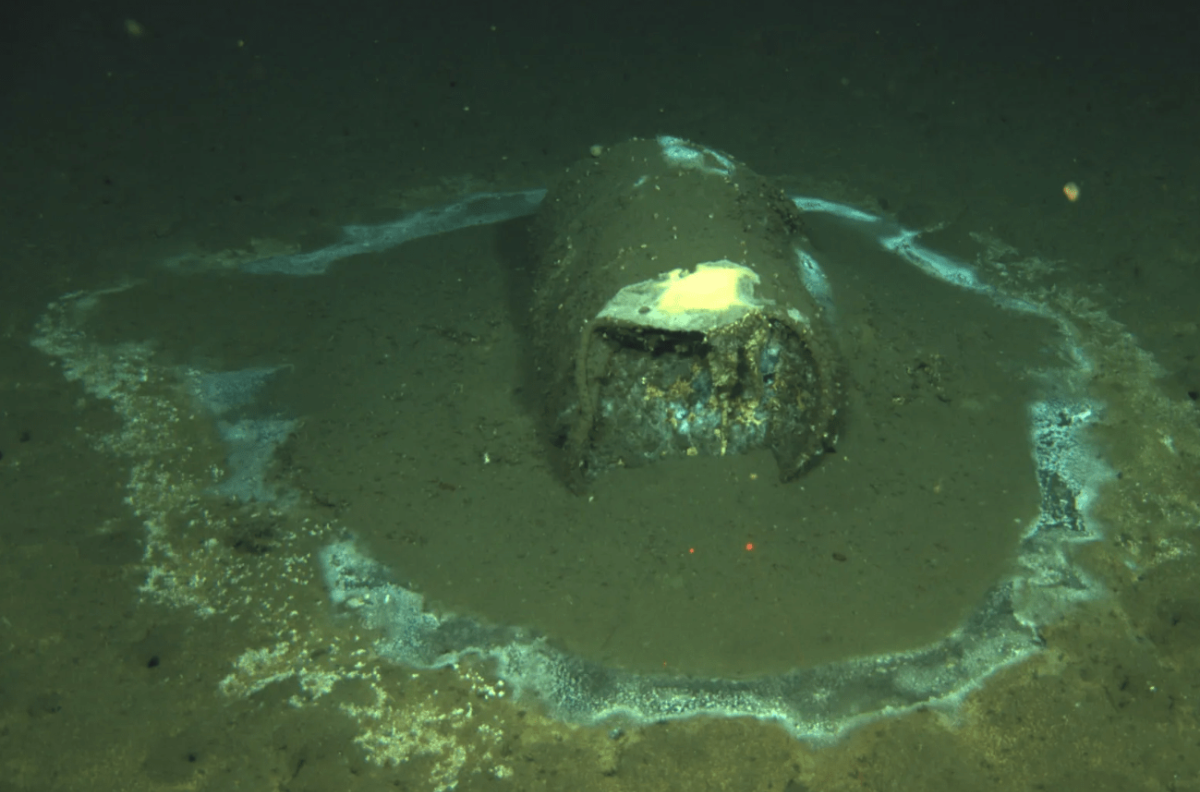
According to a recent study by UCSB scientist David Valentine and his team in Environmental Science and Technology, it’s very likely that the barrels discovered at the site of a massive DDT dumping ground in the waters off the L.A. coast were actually full of low-level radioactive waste. Photo Credit: Courtesy David Valentine
From the Santa Barbara Independent
When UC Santa Barbara scientist David Valentine found an underwater graveyard of strange barrels off the Southern California coast between Los Angeles and Catalina Island, their contents were a mystery. Nailing down what was inside the barrels was not as consequential as studying what was found around them: shocking amounts of toxic DDT.
However, it was later revealed that the DDT waste itself — created by what was once the nation’s largest DDT manufacturer, L.A. County–based Montrose Chemical Corporation — was not contained in barrels. Instead, the harmful chemicals were pumped straight into the water.
A horrible discovery, yes, but it raised the question: If it’s not DDT, then what’s in the barrels?
According to a recent study by Valentine and his team in Environmental Science and Technology, it’s very likely that the barrels were actually full of low-level radioactive waste.
Records show that many hospitals, labs, and other facilities would sometimes dump barrels of tritium, carbon-14, and other similar waste into the sea from the 1940s through the 1960s, before the enactment of ocean dumping regulations.
Jacob Schmidt, lead author of the study and a PhD candidate in Valentine’s lab, dug up a paper trail of old records that pointed to California Salvage, the same company that Montrose hired to pour its DDT waste into the Pacific, being guilty of radioactive barrel disposal as well.
These records show that Cal Salvage received a permit in 1959 to dispose of radioactive waste in the ocean. Although Cal Salvage never activated that permit, records also recount how the now-defunct company advertised its radioactive waste disposal services and led a five-year operation of radioisotope disposal for multiple facilities around L.A.
Valentine believes Cal Salvage never activated the permit because it would have required the company to dump 150 miles offshore — a multi-day trip.
But, he said, if you just go out for a “morning jaunt” between the mainland and Catalina Island, you’re back in time for a siesta. Seeing how irresponsible offshore DDT disposal was at the time, it would be unsurprising if the company took shortcuts for other hazardous waste and dumped it closer to shore, too.
“That was their business model,” Valentine explained. “They took barges offshore with chemical waste and pumped the chemical waste into the ocean. So, you know, why not take some barrels with you and dump them while you’re out there?”
While the radioactive waste is bad, the DDT — a cancer-causing chemical that is essentially liquefying the insides of California sea lions — is worse, according to Valentine.
“We now have this added insult: Not only were we dumping massive amounts of DDT waste, but you know, let’s just throw some pearls of radioactive waste on top of that,” Valentine said. “But the DDT waste is the much more harmful of the two, because it works its way into the ecosystem. It biomagnifies. It concentrates.”
Unlike DDT, known as a “forever chemical,” the low-level radioisotopes like tritium that were being disposed of here have a shorter lifetime and would have decayed over the years.
“From what we can tell, these were ones that were used in research and industrially — so this isn’t the really nasty nuclear stuff,” Valentine explained. “It’s not that they can’t cause problems. But we don’t think they hold the same potential to cause problems as the DDT dumped down there.”
Additionally, politicians are really starting to pay attention. This week, Rep. Salud Carbajal (D–Santa Barbara), along with 23 other members of Congress, signed a letter urging the Biden administration to dedicate long-term funding to the study and remediation of the issue — adding to the millions of dollars contributed by the state and federal government thus far.
More to read at SB Independent